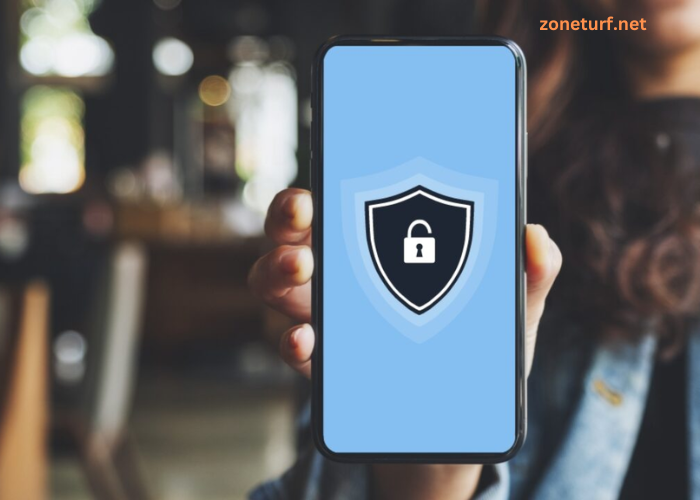The software security posture of mobile apps across several platforms, including Android, iOS, and Windows Phone, is the focus of mobile app security. This includes apps that work on tablets and mobile phones alike. It entails evaluating applications for security flaws within the frameworks they were developed with, the platforms they are intended to run on, and the expected user base (e.g., employees vs. end users). Mobile apps are an essential component of every company’s internet presence, and many companies only utilize them to communicate with customers worldwide.
Best Practices for Mobile App Security
The optimal approaches for mitigating mobile malware and devising a robust mobile application security plan vary based on the target audience—consumers versus enterprises. Examine various recommended practices that you may do to guarantee the security of your mobile apps.
1. Encryption of data
Many consumers utilize many applications on many devices and operating systems. Therefore, you must make sure that no OS or device vulnerability exposes the data shared over the application.
Encrypting the data between apps is one approach to achieve this. The practice of jumbling data until it is unintelligible to hackers is known as encryption. Two methods exist for encrypting data:
- Symmetric encryption
- Asymmetric encryption
The same security key is used by symmetric encryptions to both encrypt and decode data. Asymmetric encryption uses separate security keys for decryption and encryption at the same time. Secure coding is another recommended method for mobile app security. We can protect a company from outside intrusions and hackers with the best enterprise app security for all corporate apps.
2. Safe Passwords
The fundamental architecture of every program is composed of multiple lines of code. Therefore, secure codes might be very crucial when it comes to mobile app security. Research from the IT Pro Portal states that the program’s source code has 82% of the vulnerabilities. This implies that you have to make sure there are no vulnerabilities or bugs in the source code.
Your mobile app security can be guaranteed 100% secure if you hire a competent app designer. The best method to ensure the code is safe and free of vulnerabilities that hackers could exploit is to have a mobile application tester in addition to an expert.
3. Authentications of Users
User-generated material, or UGC, is most frequently contributed to using mobile applications. In the absence of a suitable user authentication method, UGC may be vulnerable to cyberattacks. By using social engineering techniques, hackers can obtain sensitive user data.
Via user-generated content, malware injection becomes simple once they obtain access to user accounts. In this case, you can employ user authentication methods such as multi-factor authentication. Nevertheless, an additional degree of security is provided via one-time passwords, tokens, security keys, or other methods, in contrast to the conventional authentication procedure.
An OTP received on the device, for instance, might be used by users to verify their identity through a two-factor authentication process. Compliance is a crucial component of mobile application security.
4. Integrity & Compliance
Any mobile application must meet specifications and pass security tests before it can be released. Developers may be required by the app store to adhere to particular security protocols. These controls may pertain to the installation and download of applications.
App stores are used by modern smartphones to distribute signed programs or software that requires code signing to users. This procedure guarantees that only pre-screened applications are distributed by a platform.
Once the developers’ identities and the application’s security criteria are verified, they can submit their apps to the store. The application can be downloaded if everything complies with the operating system’s requirements.
Despite the fact that this could appear difficult, there are a variety of code sign solutions on the market that make it simple. To guarantee compliance and integrity, you can also quickly obtain an inexpensive code signing certificate for your application. It demonstrates that the code is authentic and has yet to be altered since it was first published.
With this certificate, developers can encrypt their personal data, which can then be further decrypted using a public key that consumers can obtain. The Application Programming Interface, or API, is another element of app security that you must comprehend.
5. Safe APIs
APIs are necessary to enhance functionality and integrate third-party services. It makes it possible for disparate systems to communicate with one another and exchange data. However, you need secure APIs and keep the exchanged data private if you want greater app security. By using data access authorizations, API security can be guaranteed to the greatest extent.
6. Triggers for Security
In the event that someone tampers with the application source code, you can use particular triggers to notify your systems. AWS Lambda functions, for instance, can be used to provide notifications for malicious injection or tampering with cloud-native applications.
7. Data Privileges
Determining data privileges is another method to make sure that your application is protected from harmful cyberattacks. Adopting the least privilege strategy when giving restricted users access to sensitive data. This will guarantee that sensitive information is not obtained by someone with malevolent intent or lack of data access.
8. Safe Storage Units
Security keys are one of the most essential components of encryption. In the event that your application encrypts data, attempt to stay away from storing security keys in nearby data centres.
You can utilize secure containers to store these keys, though, as most businesses employ the hybrid cloud method to keep sensitive data in nearby data centres. To guarantee security for such keys, you can, for instance, use sophisticated security methods like 256-bit AES encryption with SHA-256 hashing.
Conclusion
You should place a high focus on mobile app security because the number of smartphones in use is growing daily. Regretfully, hackers are becoming more adept at harmful injection assaults thanks to deceptive traits and social engineering techniques. As a result, you must strengthen your data security protocols and prevent these hackers from accessing your applications.


